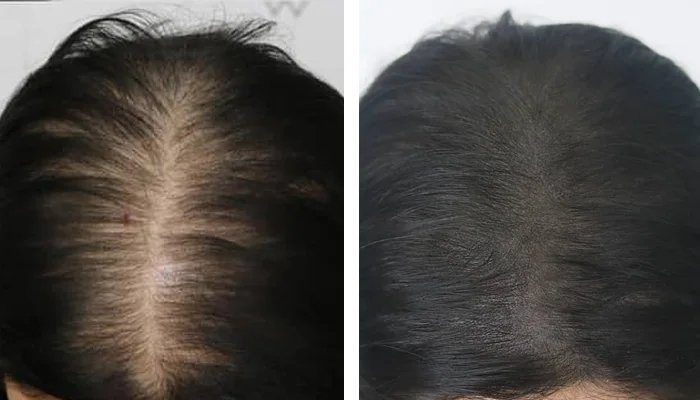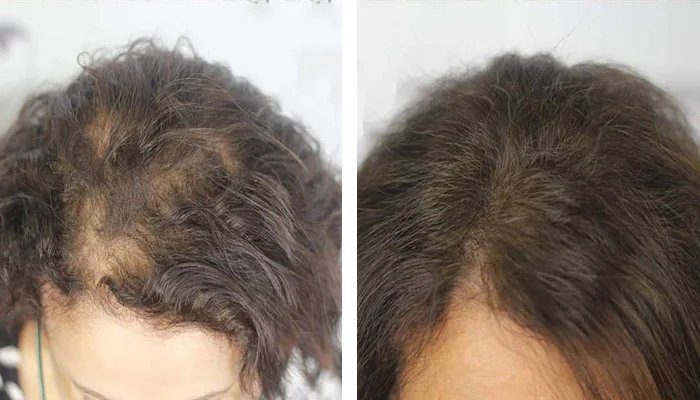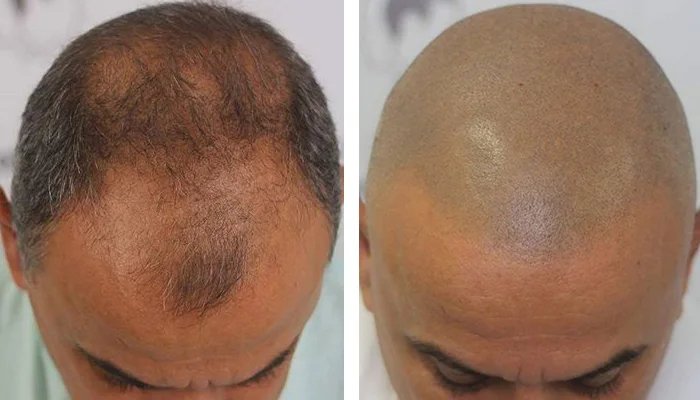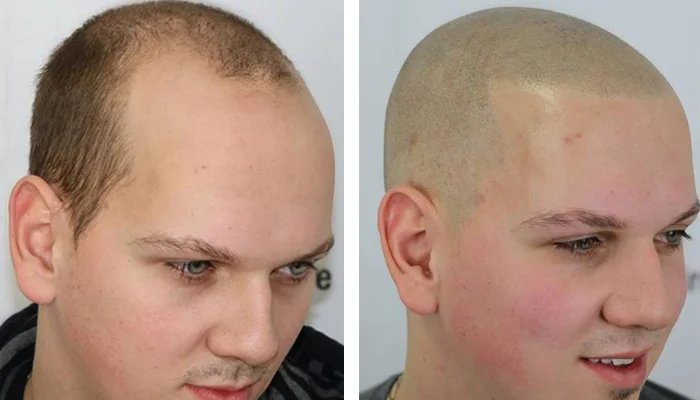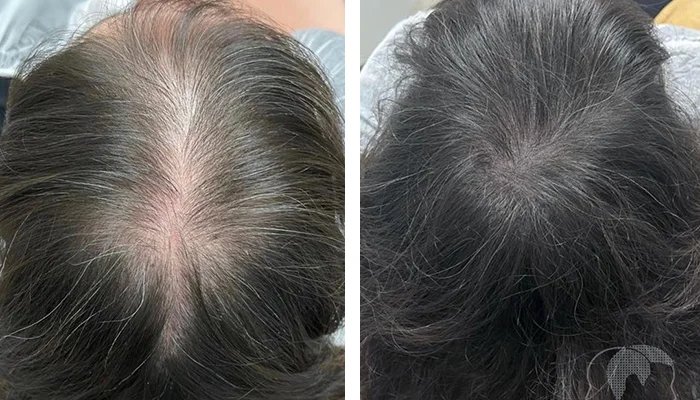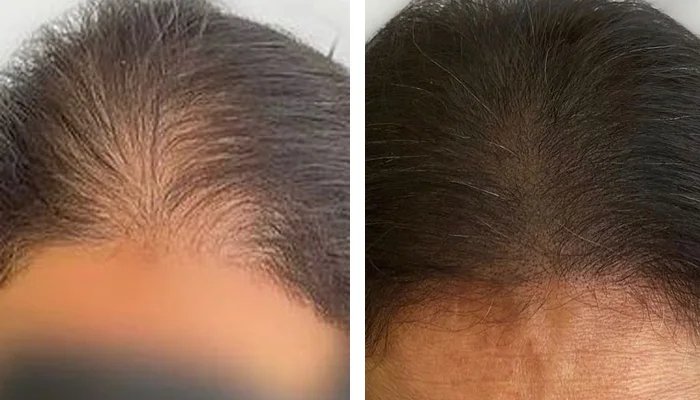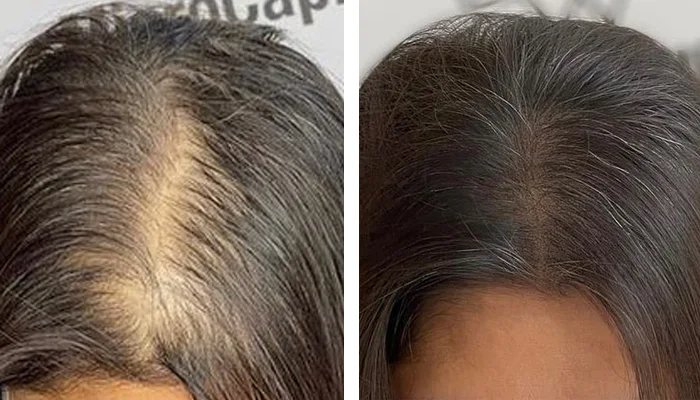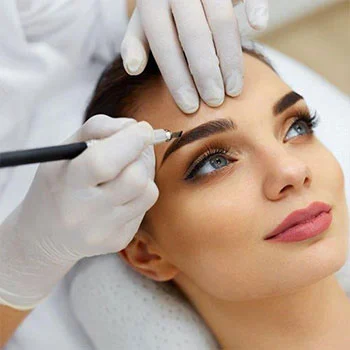What Is Micropigmentation?
Micropigmentation is a permanent cosmetic procedure, which is also known as permanent makeup or cosmetic tattooing. It makes use of pigments to improve and accentuate a faded color or replace a lost color often on the face and head such as hairline, scalp, eyelids, eyebrows, eyelashes, and lips, among which scalp micropigmentation (SMP) is the most common. However, it can also be used to cover up scars or skin deformities and discoloration on different parts of the body. Micropigmentation can eliminate the need for regular makeup, which in turn saves time, reduces the challenges of wearing makeup, and boosts self-confidence.
Who Is a Good Candidate?
Micropigmentation can offer solutions to different issues. Both men and women who want to look their best, enhance a facial feature or restore the appearance of a lost feature due to medical conditions without having to put on daily makeup are good candidates for micropigmentation. However, since micropigmentation offers long-term results young candidates may need to think more before getting the procedure if this is only done because it is trendy. What seems hot and trendy today, may not remain the same tomorrow and you regret getting stuck with a look you no longer desire. Micropigmentation could also benefit people who find wearing makeup physically challenging or are allergic. The following is a list of concerns that can be addressed by micropigmentation.
- You are suffering from thinning hair, scalp show-through, or hair loss and would love to create the appearance of hair or the illusion of a full head of hair
- You have lost your eyebrows or eyelashes due to chemotherapy or alopecia or suffer from thin or asymmetrical eyebrows due to aging, overplucking, or some medical conditions and would love to reshape and give them a fuller appearance
- Your lips are thin and you would love fuller more defined lips with richer color
- You wish to recreate the appearance of an areola (the colored area surrounding nipples) after undergoing a breast surgery
- You are suffering from vitiligo (an autoimmune disease causing patches of color loss in the skin) and look for ways to camouflage the discoloration
- You wish to hide a scar or a birthmark
- You may want it to complement a hair transplantation procedure to cover up the scar or make the results look better
- You’re allergic to makeup products and can not wear daily makeup
- You’re not good at wearing makeup, find it difficult or physically challenging due to a background condition such as poor eyesight or shaking hands
- You want to save time and get rid of daily makeup
How to Prepare for Micropigmentation
Since the color used in micropigmentation is likely to cause an allergic reaction, you need to undergo an allergy test to make sure it won’t cause any irritation. A skin analysis will also help the specialist to have a better idea of your skin condition and perform the procedure accordingly.
How Is Micropigmentation Done?
Your cosmetic specialist cleans the area of treatment and uses gloves to reduce the risk of infection. Micropigmentation is considered minimally painful and is usually done under the effect of topical anesthesia to provide numbness to the skin so that the candidate will not feel much pain and discomfort during the procedure. The practitioner often gives you an idea of what the procedure result will look like by creating a design on the area before the actual treatment. Micropigmentation is carried out in an office setting using a pen-like device similar to the tattoo gun but with finer needles delivering the biocompatible hypoallergenic pigments a few millimeters deep into the skin where the dermis (the middle layer of the skin) lies to create a desired pattern and design.
The procedure can take 30 minutes to several hours depending on the complexity of the case and the area to be treated. Performing micropigmentation on larger areas may require more than one session. Moreover, occasionally, several sessions may be suggested to provide longer-lasting effects by layering colors.
You’ll be provided with an antiseptic to keep the treated area clean after the procedure and an ointment for softening and speeding up the healing. You may also have to wear a bandage for a few hours after the procedure to better protect the micropigmentation site.
What Are the Pros and Cons of Micropigmentation?
As already mentioned, micropigmentation can be performed to solve different issues. Therefore, depending on the concern, it could be compared with different methods addressing it. When it comes to scalp micropigmentation (SMP), it is often compared to hair transplantation, both of which are procedures to make up for hair loss, although in two completely different ways.
Compared to hair transplant surgery a micropigmentation has the following advantages:
- Micropigmentation is less invasive as it’s not a surgical procedure and does not involve any incisions.
- It causes less pain.
- It is more affordable.
- There is no downtime.
- Micropigmentation can be performed to create the illusion of scalp hair even if you’re completely bald.
- It offers immediate results. The final color may take days to develop though.
- It is low-maintenance.
- It leaves no scar.
Disadvantages:
- Multiple sessions may be required if you want a full scalp micropigmentation (usually 2-3).
What Is Micropigmentation Follow-up Care Like?
Micropigmentation is a very low-maintenance procedure that does not require follow-up sessions. However, you need to know that depending on the case, you may need several sessions to complete the treatment. In such cases, the treatment sessions are usually 10-14 days apart to ensure complete healing of the area. No other follow-up sessions will be required. However, to maintain the desired effects for longer, you will need touchups every 3 to 6 years.
How Long Does the Micropigmentation Result Last?
Micropigmentation results are long-lasting and you can expect to enjoy the look for about 3 to 6 years without having to undergo touchups. There are several factors that contribute to the durability of the results. Here are some of the tips to help you to maintain the results for longer:
- Avoid too much sun exposure as it causes the pigments to fade out faster. Use a sunscreen or wear something to cover up the treated area to avoid overexposure to the sun.
- Try moisturizing the treated area once a day.
- Use exfoliating cleanser to better maintain the result.
What Are Micropigmentation Side Effects?
While micropigmentation is one of the safest cosmetic solutions involving chemical infusion, it can come with some side effects just like any other medical or aesthetic procedure. However, micropigmentation side effects are usually very mild and resolve on their own. Common side effects include mild pain in the treated area, redness, itching, dryness of the skin, an increase in hair loss and hair thinning, and eczema. Other possible side effects include bumps, swelling, bleeding, and loss of sensation.
What Are the Risks and Complications?
Risks and complications related to micropigmentation are rare and minimal because it’s a non-invasive procedure that does not involve any deep incisions. The risk of infections can be significantly diminished if the procedure is carried out by an experienced and licensed practitioner under sterilized conditions. The following are some of the possible risks and complications of micropigmentation:
Infection: Infections can occur if the needles used in the procedure are not properly sterilized or if the ink is contaminated. Hepatitis and HIV can also be transmitted through unsterile needles.
Allergic Reactions: The ink color or the type of ink used in the procedure can cause allergic reactions. However, it could be avoided if you undergo a scratch test before the procedure to see if you’re allergic.
Eye complication: If the treated area is close to the eye and the procedure is not performed skillfully, it may give rise to some eye complications such as eyelid injury, eyelid turning away from the eyeball, crusting, and loss of eyelashes.
Nodules and Scar Tissue: Your body may react to the pigments and form a nodule or thick scars (keloids).
MRI Complications: Tattoo pigments have been reported to be interfering with the quality of MRI scans in some cases. Some patients undergoing MRI images of the head also reported swelling and burning in the treated area of the face.
What’s Micropigmentation Recovery Like?
Micropigmentation is a non-invasive procedure with no downtime. So you can go back to work and resume your regular activities immediately after the procedure. Mild swelling and redness are normal in the first 2-3 days. You’ll be instructed to use an ice pack, antiseptic, specific ointments, and moisturizer to take care of the treated area and promote healing. It is recommended that you keep the treated area clean and avoid getting it wet for the first few days.
You may also need to avoid chlorinated pools, saunas, steam rooms, or tanning beds for a while, about 4 weeks, to help with a more stable and long-lasting result.
While complications are rare, make sure to call your specialist as soon as you experience an unusual symptom such as excessive pain, swelling, redness, bleeding, feeling hot or burned in the treated area, or developing a rash or fever.
Although the results are immediate, the treated area may look reddish until the swelling subsides. You may need to wait for 5-7 days for the pigments to settle and for the excess color to be washed off so that you will see the final outcome.
Micropigmentation Frequently Asked Questions
Is the micropigmentation result really permanent?
Yes and no. Although micropigmentation ink fades over time, it never disappears completely. So you may want to consider it a permanent procedure as it would be very difficult to remove it. On the other hand, if you want to maintain the fresh look for long you’ll need to have touchups every 3 to 6 years.
Does insurance cover micropigmentation?
No, micropigmentation is done as a cosmetic solution and is not covered by insurance.
Does micropigmentation leave a scar?
No, micropigmentation is a non-surgical procedure and does not involve any incisions. Therefore, no scar will be left after the procedure. However, in rare cases, an allergic reaction to the tattoo ink may cause scar formation around pigments as a complication.
Does micropigmentation require regular post-op care?
Micropigmentation is a very low-maintenance cosmetic procedure that offers long-term results. Usually, you won’t need follow-ups.
Does the micropigmentation color match my skin and hair color?
Yes, an experienced specialist usually uses a combination of colors to create a color that best matches your skin tone and hair color to provide a more natural look.
Can I have scalp micropigmentation (SMP) before or after a hair transplant?
Yes, you can get an SMP both before and after hair transplant surgery. If you opt to have the SMP as the first procedure, you can have the hair transplant almost immediately afterward, however, it is best to wait for a month and then go for the hair transplant procedure. Micropigmentation can also be done after a hair transplant procedure not only to enhance the look of the results but also to camouflage the scar resulting from the hair transplant surgery. But you’ll be advised to wait for at least a year before you decide to get an SMP after a hair transplant.
Can I donate blood if I get a micropigmentation?
While rules vary in different locations, you’ll probably need to wait for 6-12 months before you’ll be able to donate blood after having a micropigmentation procedure if you have got it at a non-regulated center.
Are the results immediate?
Yes, however, the redness and swelling will disappear and the excess color wash off in a few days. You can expect to see the final look 5-7 days after the procedure.
Do I need several treatment sessions?
Procedure sessions depend on the area to be treated and how complex the case is. Accordingly, you may need 1-3 sessions for the best result.
How long does the result last?
The desired result can last for 6 years or more. While micropigmentation is considered a permanent makeup and the ink never washes off completely, to maintain the initial look and color, you’ll need to have touchups after 3-6 years.
How long does micropigmentation take?
It can take anywhere from 30 minutes to several hours or 2-3 sessions, each taking several hours, depending on the complexity of the case and the size of the area to be treated.
Is micropigmentation painful?
Micropigmentation is considered a minimally painful cosmetic procedure. Moreover, it is done under topical anesthesia to reduce pain and discomfort. Compared to tattooing, micropigmentation is a less painful procedure considering its finer needles.
Can I complete my micropigmentation treatment in 2 or 3 consecutive days?
No, in case micropigmentation of the same area of the body takes more than one session you need to take the treatment sessions at 10-14 days intervals to make sure the treated area is fully healed and won’t be irritated.


